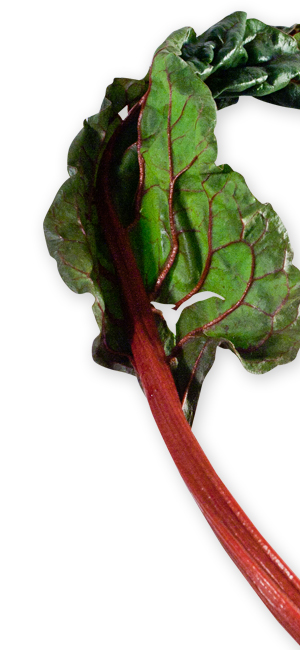Also called silverbeet, this green leafy biennial vegetable hailed originally from Sicily. It established a place in gardens in England and America only in the 1830s. Indeed, its first notice in American agriculture is Baltimorean Gideon Smith’s letter of Oct. 30, 1829 announcing the receipt of seeds from Europe and his later report of plantings, published in The American Farmer. Horticulturist Robert Buist was its primary antebellum promoter and the Philadelphia area the place where it first found popularity.[1] As late as the 1850s it remained a specialty plant, found only in the largest eastern markets. Broader cultivation came after the Civil War.
Young plants were sometimes consumed raw as a salad. In the 19th century chefs often separated the mid rib from the leaves and prepared it like asparagus. The leaves were dressed like spinach. Indeed, in the annual rotation of greens at the dining table, it enjoyed prominence during high summer, when spinach and sea kale did not prosper. In the United States it was planted by seed either in March, or May, depending when one wished the leaf to come to maturity. Because the smallish root bulb is left in the ground when the leaves are cropped, Swiss Chard refoliates, so repeated harvesting is possible throughout the six month growing season.
The leaves grow out to two feet in length, with prominent ribs, red, golden orange, or greenish white in color. Indeed, the lavish amount of organic matter in the leaves caused it to be used as green manure in Canada during the 1870s, the crop being plowed under to nourish the soil.
1. Robert Buist, The Family Kitchen Gardener (New York: J. C. Riker, 1847), p. 124.
White Leaf Beet, or Spinach Beet History
numerous undulating leaves with white green stalk
Swiss Chard (Sea Kale Beet) History
Broad leafed, darker green leaf color, stiff and stocky of habit with white mid-rib.
Silvery Swiss Chard History
Broad-ribbed, productive, and mild-flavored.
Red-stalked Swiss Chard (Chilian Beet) History
red or deep yellow ribs, erect growth, and valued as much as a garden ornamental as a culinary plant
Swiss Chard Salad. (Murrey’s Salads and Sauces 1884) History
Trim off the leaves of the chard neatly, without cutting the midrib; wash them well and boil and serve them as spinach. Trim the midrib into equal lengths, tie them in small bunches, and boil fifteen minutes, drain, remove the strings, and serve hot or cold with a plain salad-dressing. Thomas Jefferson Murrey, Murrey’s Salads and Sauces (New York: Charles Dillingham, 1884), p. 255.
Swiss Chard (New England Faarmer 1831) History
We cook the Swiss Chard as follows —trim the leaf from the stem with a knife, and boil the stem in water with a little salt till tender, then take them out and drain all the water off, put them in a stew-pan, pour on some drawn butter, (sauce blanche, as the French call it) cover them close and stew them for 15 minutes. This dish is then equal (to my palate) to asparagus. Gideon B. Smith “Mode of Cooking Swiss Chard,” The New England Farmer 9 (June 22, 1831), p. 388.
Swiss Chard or Silver Beet as Greens (How to Cook Vegetables 1893) History
These are leaflets or mid-ribs of the white beet. Take them while young and tender, wash, tie into bundles, boil and dress precisely the same as asparagus on toast. Serve with them, sauce Hollandaise or English drawn butter. This makes one of the most delicate and delicious of dishes. Sarah Tyson Heston Rorer, How to cook Vegetables (Philadelphia: W. Atlee Burpee, 1893), p. 27
Sorrel and Swiss Chard (Vaughan’s Vegetable Cook Book 1898) History
Sorrel and Swiss chard are often used together as the chard modifies the acidity of the sorrel. They make acceptable greens when used together and are treated like spinach. Vaughan’s Vegetable Cook Book (New York & Chicago: Vaughan’s Seed Store, 1898), P. 57.

